2024 February 29
More miscellaneous invertebrates by Ian Cooper.
Jeremy Tatum writes: The conspicuous dark-bordered pale dorsal stripe on the caterpillar below is more pronounced than is usual for Noctua pronuba, so it may be something else – nevertheless I am fairly certain that it is indeed N. pronuba.
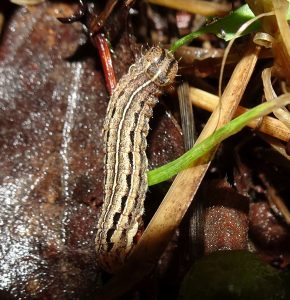 Probably Noctua pronuba (Lep.: Noctuidae) Ian Cooper
Probably Noctua pronuba (Lep.: Noctuidae) Ian Cooper
Jeremy writes, of the fly below: I don’t know what species this is. In spite of its short antennae, I think it is of the group Nematocera (thread-horns) – a female (the males usually have longer and more ornate antennae). If anyone knows what it is, please do let us know.
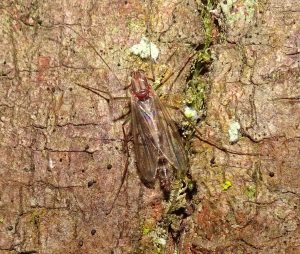 Unidentified fly (Dip.: probably Nematocera) Ian Cooper
Unidentified fly (Dip.: probably Nematocera) Ian Cooper
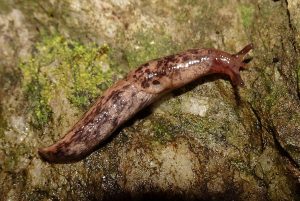 Deroceras reticulatum (Pul.: Agriolimacidae) Ian Cooper
Deroceras reticulatum (Pul.: Agriolimacidae) Ian Cooper
Dr Frans Janssen tells us that the springtail below is a new, undescribed, species of Ptenothrix.
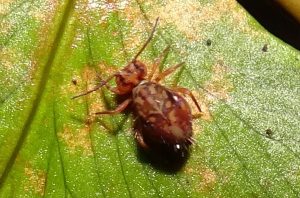 Globose springtail, Ptenothrix sp. nov. (Coll.: Dicyrtomenidae) Ian Cooper
Globose springtail, Ptenothrix sp. nov. (Coll.: Dicyrtomenidae) Ian Cooper
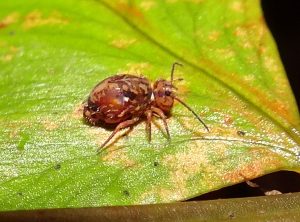 Globose springtail, Ptenothrix sp. nov. (Coll.: Dicyrtomenidae) Ian Cooper
Globose springtail, Ptenothrix sp. nov. (Coll.: Dicyrtomenidae) Ian Cooper
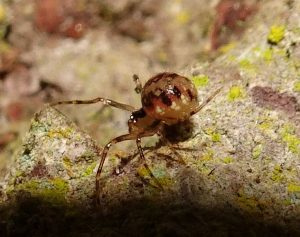 Rugathodes sexpunctatus (Ara.: Theridiidae) Ian Cooper
Rugathodes sexpunctatus (Ara.: Theridiidae) Ian Cooper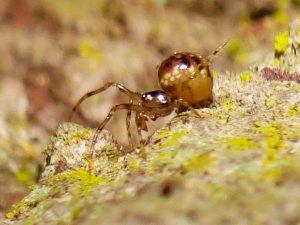 Rugathodes sexpunctatus (Ara.: Theridiidae) Ian Cooper
Rugathodes sexpunctatus (Ara.: Theridiidae) Ian Cooper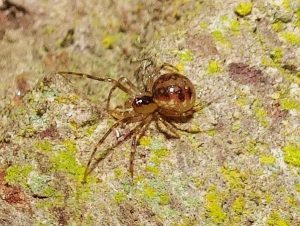 Rugathodes sexpunctatus (Ara.: Theridiidae) Ian Cooper
Rugathodes sexpunctatus (Ara.: Theridiidae) Ian Cooper
 Probably Noctua pronuba (Lep.: Noctuidae) Ian Cooper
Probably Noctua pronuba (Lep.: Noctuidae) Ian Cooper Unidentified fly (Dip.: probably Nematocera) Ian Cooper
Unidentified fly (Dip.: probably Nematocera) Ian Cooper Deroceras reticulatum (Pul.: Agriolimacidae) Ian Cooper
Deroceras reticulatum (Pul.: Agriolimacidae) Ian Cooper Globose springtail, Ptenothrix sp. nov. (Coll.: Dicyrtomenidae) Ian Cooper
Globose springtail, Ptenothrix sp. nov. (Coll.: Dicyrtomenidae) Ian Cooper Globose springtail, Ptenothrix sp. nov. (Coll.: Dicyrtomenidae) Ian Cooper
Globose springtail, Ptenothrix sp. nov. (Coll.: Dicyrtomenidae) Ian Cooper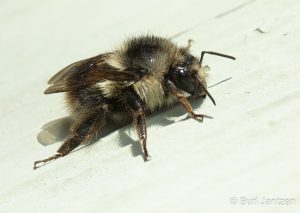 Queen Bombus mixtus (Hym.: Apidae) Burl Jantzen
Queen Bombus mixtus (Hym.: Apidae) Burl Jantzen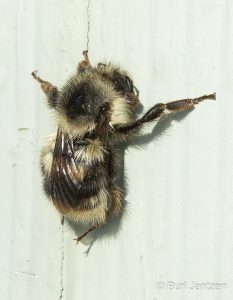 Queen Bombus mixtus (Hym.: Apidae) Burl Jantzen
Queen Bombus mixtus (Hym.: Apidae) Burl Jantzen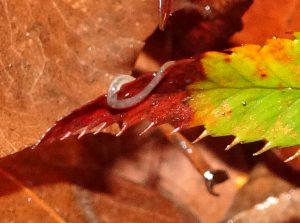 Nematode (Phylum: Nematoda) Ian Cooper
Nematode (Phylum: Nematoda) Ian Cooper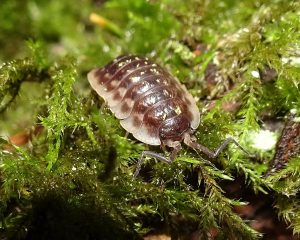 # European Sowbug Oniscus asellus (Isopoda: Oniscidae) Ian Cooper
# European Sowbug Oniscus asellus (Isopoda: Oniscidae) Ian Cooper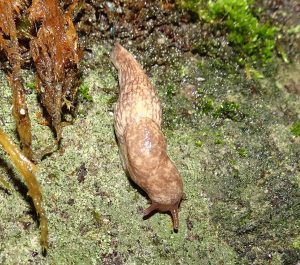 * Grey Field Slug – Deroceras reticulatum (Pul.: Agriolimacidae) Ian Cooper
* Grey Field Slug – Deroceras reticulatum (Pul.: Agriolimacidae) Ian Cooper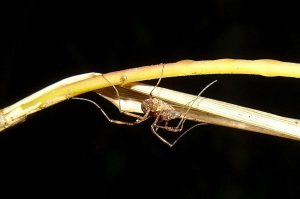 *Unidentified Harvestman (Opiliones) Ian Cooper
*Unidentified Harvestman (Opiliones) Ian Cooper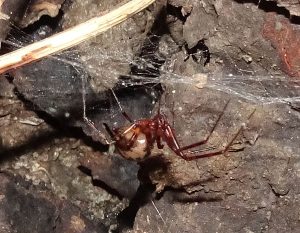 # Forest Spider – Pimoa altioculata (Ara: Pimoidae) Ian Cooper
# Forest Spider – Pimoa altioculata (Ara: Pimoidae) Ian Cooper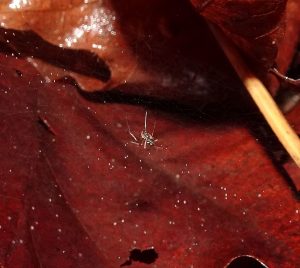 # Linyphantes sp. (Ara.: Linyphiidae – Linyphiinae) Ian Cooper
# Linyphantes sp. (Ara.: Linyphiidae – Linyphiinae) Ian Cooper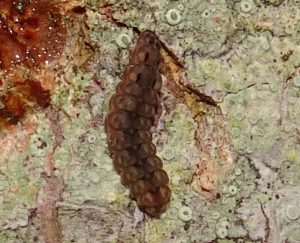 #Soldier beetle larva (Col.: Cantharidae) Ian Cooper
#Soldier beetle larva (Col.: Cantharidae) Ian Cooper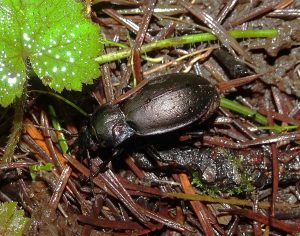 #European Ground Beetle Carabus nemoralis (Col.: Carabidae) Ian Cooper
#European Ground Beetle Carabus nemoralis (Col.: Carabidae) Ian Cooper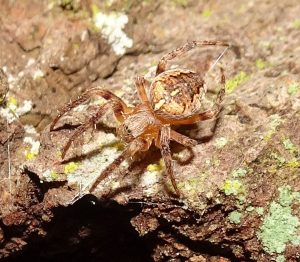 *Araneus diadematus (Ara.: Araneidae) Ian Cooper
*Araneus diadematus (Ara.: Araneidae) Ian Cooper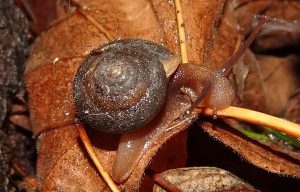 # Cryptomastix germana – or – Vespericola columbianus (Pul.: Polygyridae) Ian Cooper
# Cryptomastix germana – or – Vespericola columbianus (Pul.: Polygyridae) Ian Cooper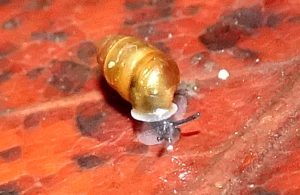 * Common Chrysalis Snail – Lauria cylindracea – (Pul.: Lauriidae) Ian Cooper
* Common Chrysalis Snail – Lauria cylindracea – (Pul.: Lauriidae) Ian Cooper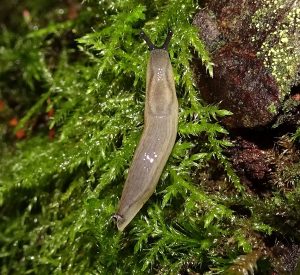 # Three-band garden slug – Ambigolimax valentianus (Pul.: Limacidae) Ian Cooper
# Three-band garden slug – Ambigolimax valentianus (Pul.: Limacidae) Ian Cooper